Rectors of the University of St Andrews, 1938 to 1967
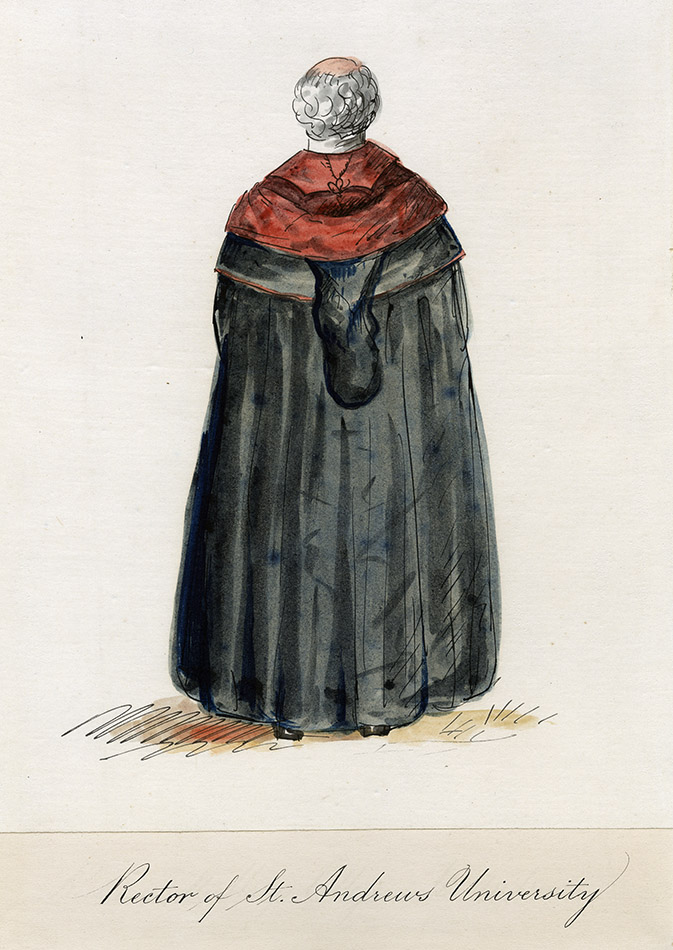
This week sees the installation of a new Rector at the University. The office of Rector is as old as the medieval University but took its present form after it was redefined under the Universities (Scotland) Act of 1858. The Rector chairs the University Court and presides over General Council in the absence of the Chancellor. He/she is elected by the matriculated students for a term of 3 years. They are independent, external to the University and seen as representing the student community. The celebrations around Rectorial Installations usually follow a time-honoured St Andrews pattern. The day before the Installation there are student-led celebrations, from the arrival of the Rector in some novel manner, their being greeted by students who give an address to the Rector-elect, and their transfer to an open carriage or other vehicle for the ‘drag’.
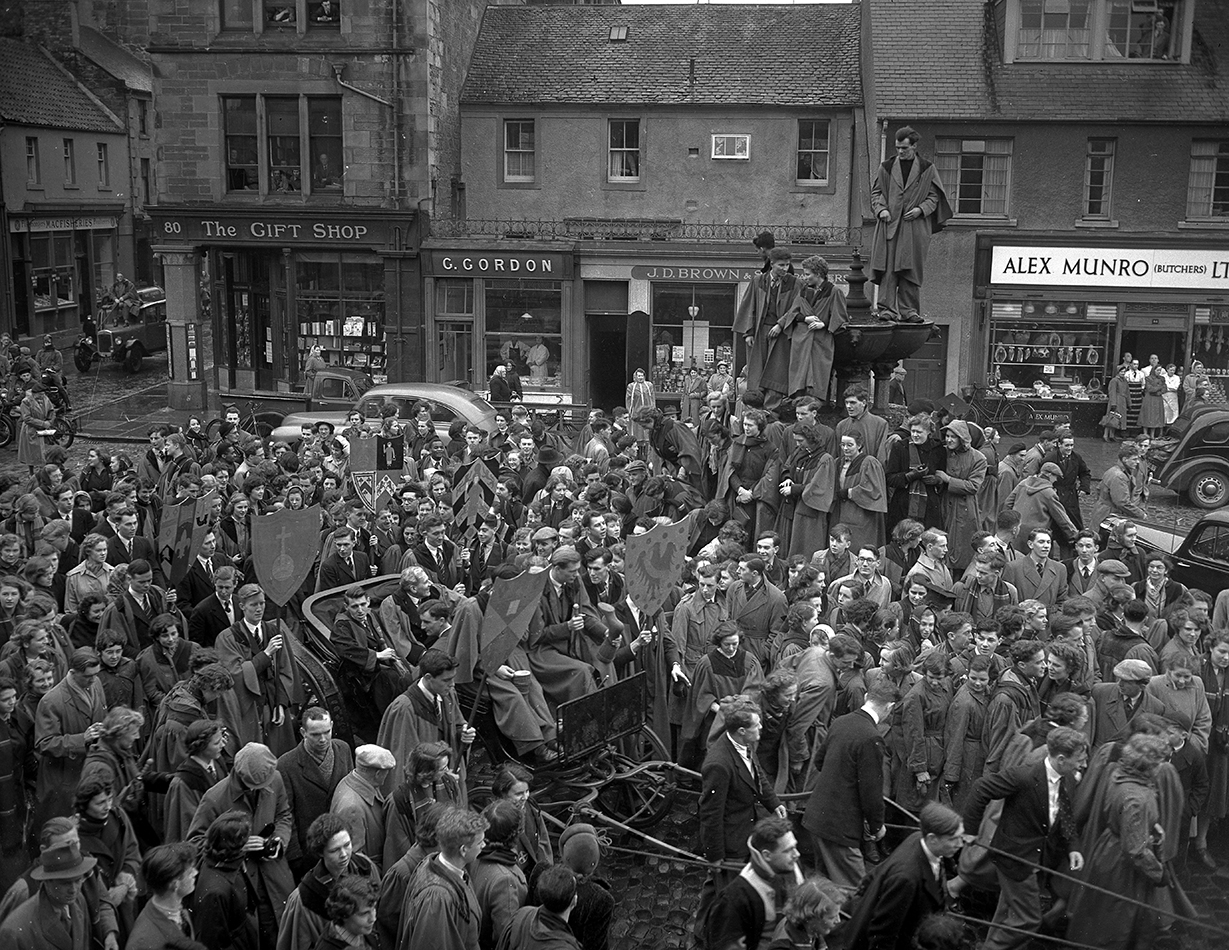
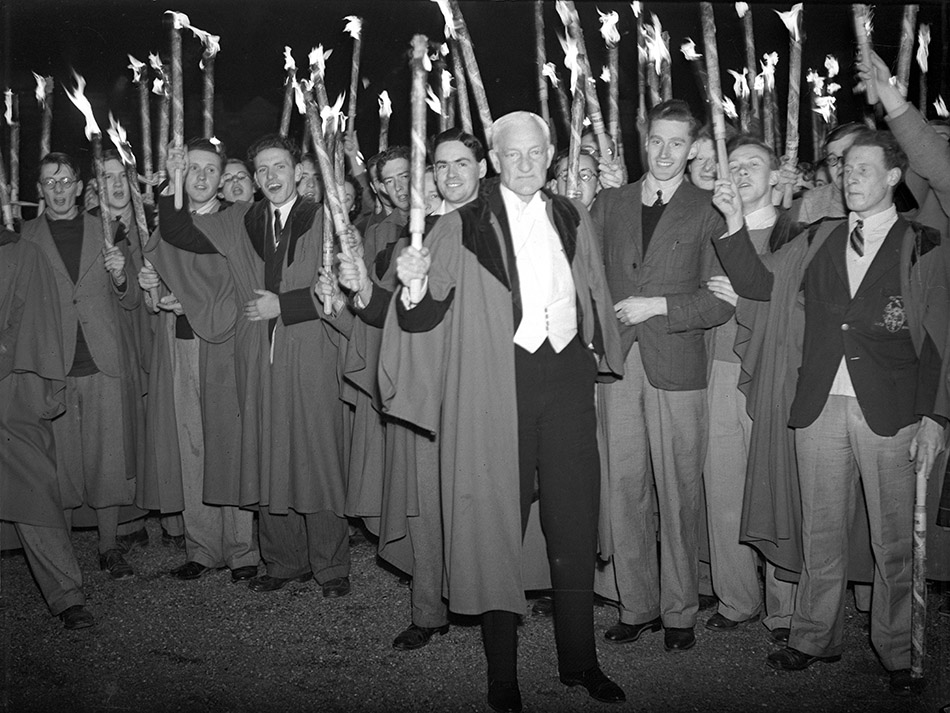
University sporting Blues drag or accompany the carriage around town with stops to receive gifts and make and hear speeches from student groups, clubs and societies and to share a drink with them. The Drag ends with a reception at the Union followed by a torchlight procession in the evening from St Salvator’s Quad to the end of the pier. In times past there was also a banquet and ball. The day of installation began with a church service, then a Serpentine procession to Younger Hall, a ceremony of installation with speeches of welcome and an address delivered by the newly-installed Rector. Before 1967 the events were repeated in that part of the University on the other side of the Tay.
This is the first of a short series of blogs that covers the Rectors since 1939 and focusses in particular on the drag, the imaginative gifts presented by the students to their new Rectors and the different ways the Rectors have arrived into St Andrews. The prize probably goes to Sir Clement Freud who, in 2003, had himself delivered to the Quad as a parcel in a Royal mail post van! Today we cover 1938-1967.
Sir David Munro (1938-46)
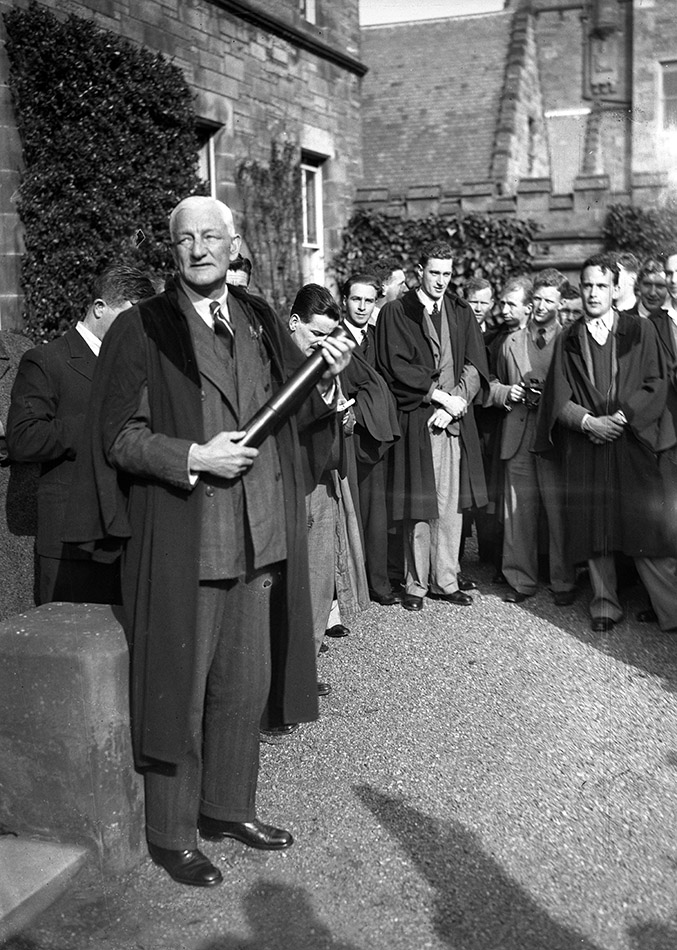
Where most Rectors had previously chosen to arrive by train and Lord Rosebery had come by yacht, Munro, as befitted his position as a retired Air Vice-Marshal, came by air. There had been tentative plans of the part of the SRC for him to land in University Park from where, in a chair carried on poles, he would have been ferried from his aircraft to his carriage. In the event, with an escort of two other aircraft in close formation, his Avro-Anson bomber flew low over St Andrews, crossed right over the roof of the R&A and swept out over the links to land at Leuchars, where he was greeted by an Air Force guard-of-honour and scarlet-gowned students. From there he was conveyed as part of a car cavalcade to the outskirts of St Andrews where he was greeted by his constituents arrayed on the railway footbridge before commencing his drag through the town. Since elections to Court weren’t held until after WW2, he is the longest serving rector in the recent history of the University.
Sir George Cunningham (1946-9)
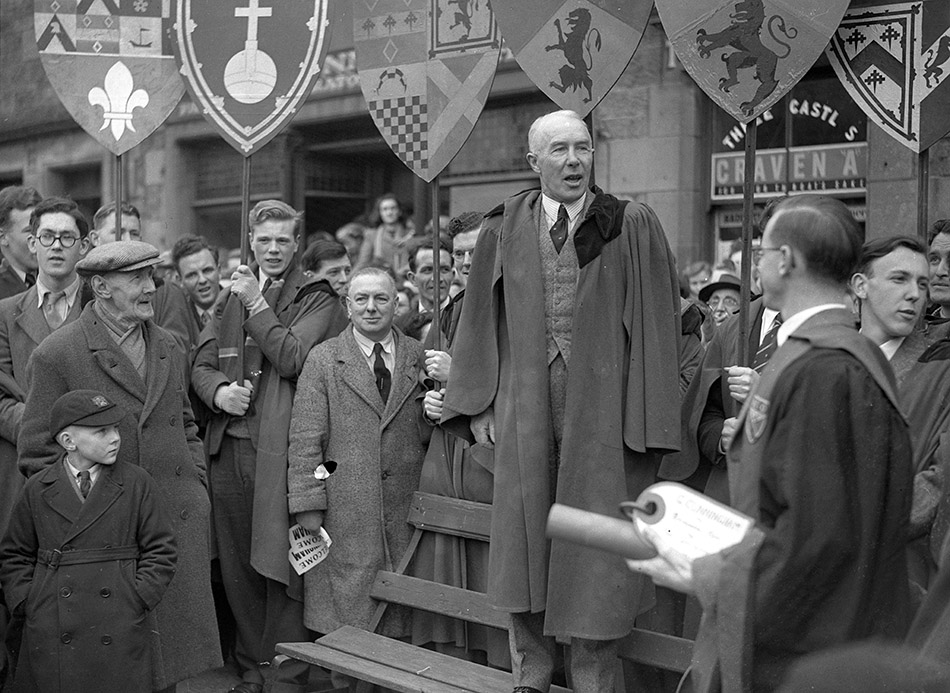
The Rector-Elect was welcomed at the West Port by crowds of enthusiastic students, where he was presented with an illuminated Latin address and was showered with leaflets proclaiming ‘Welcome to Cunningham’. He was given a group of damsels alleged to be his harem, and gifts included bannocks, a garland of daffodils, a bottle of sherry, a tankard of beer and half a tumbler of whisky. A torchlight procession of more than 500 went to the end of the pier and back, torches flung on a bonfire at the West Sands.
David Cecil, Lord Burghley (1949-52)
David Burghley was an English athlete, sports official, peer, and Conservative Party politician. He won the gold medal in the 400 m hurdles at the 1928 Summer Olympics (watch a video of the event below). His drag was led by a pipe band and 20 athletes pulled his carriage. He received gifts from various halls of residence: golf balls (University Hall); a garland of daffodils and a golfing umbrella (Chattan); a croquet mallet and ball (Sallies); a pair of athletic pants trimmed with black lace with his name embroidered on them (Hepburn). Women from Wardlaw Hall gave him an outsize pipe stuffed with straw and benzene which gave off dense black smoke. Waitresses in black with frilled aprons served the Rector wine at the women’s Union while halfpennies whistled down from the windows of the Men’s Union, and the rector tipped the waitresses with them. He was met at Deans Court by students dressed as friars who drew up a bucket of water from the old well, from which he drank. There was a guard of honour at the fountain in Market Street, and even a washing line strung between the two cathedral towers bearing pyjamas and a red gown.
David Lindsay, Earl of Crawford and Balcarres (1952-55)
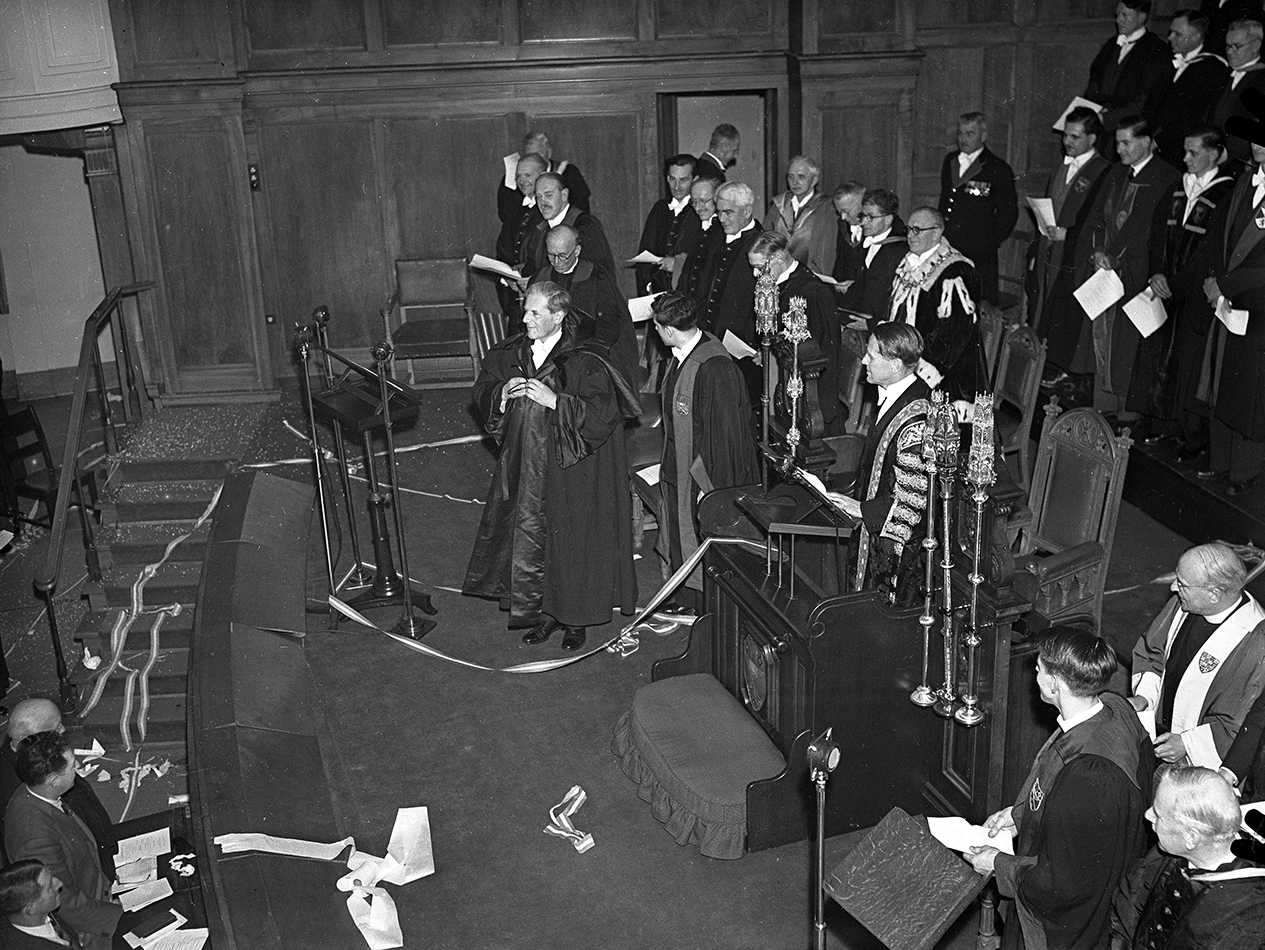
Local peer David Lindsay defended the role of the Rector as Chair of Court when it was under threat during the passage of the 1953 University of St Andrews Act. He continued to serve the University until his death in 1975. His drag gifts included a lighter, a lobster and a golden brick (not to be dropped too often), a hot water bottle, a glass of sherry, a basket of pigeons, all but one of whom, it is reported, immediately flew away, and a cheese. At the rectorial ball the new ‘Earl of Crawford’s Reel’ was danced in his honour.
David Maxwell-Fyfe, Viscount Kilmuir (1955-58)
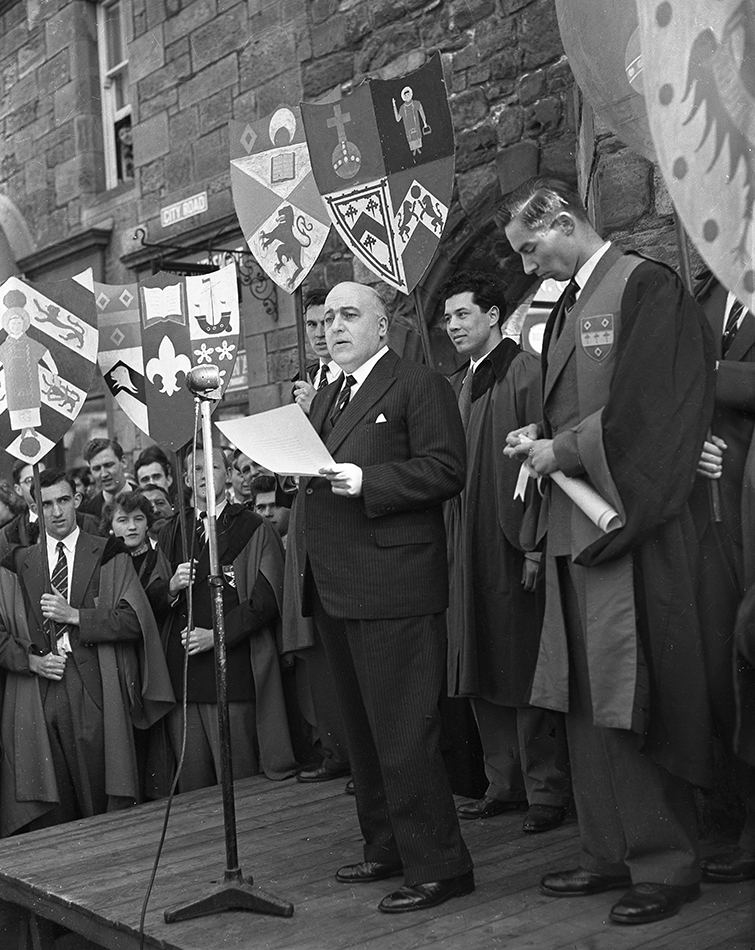
A brilliant lawyer and prosecutor, Kilmuir was Home Secretary in a Tory government from 1951 and Lord Speaker in the House of Lords from 1954. In his memoirs Kilmuir describes his installation as “a delightful interlude in the sombre world of political decisions and departmental chores”. His drag featured a formation of motor bikes at the West Port. Gifts included a yachting cap to steer the University, a glass of sherry and invitation to dinner, a cushion for his chair of court, a ticket for the installation, and a box of gob stoppers. Outside Chattan he was briefly kidnapped and given a ride in a handcart. He was tried at St Salvator’s and convicted of 3 years hard labour in Court; Men from St Regulus dressed as ‘eastern girls’ danced and made him smoke a hookah; there were Grecian dressed figures posed on the fountain, and his ‘horses’ went off to the pub. His installation included the traditional rousing rendition of ‘the animals came in two by two’ as the academic procession formed up, followed by the ‘Gaudie’. The 1956 ‘Rectorial Booklet’ describes the Younger Hall as being quiet and peaceful until the students began to pour in.
… in a few minutes pandemonium reigned everywhere. Coloured streamers flashed this way and that and the noise was past belie. Bells, trumpets, horns, even a gramophone, could be heard from time to time. Then a long mat was lifted from one of the passageways. After an indecisive tug-of-war it was slung from one side of the balcony to the other. One intrepid young Classicist set about crawling along the funambulatory path it offered and succeeded in reaching the other side, much to the relief of all. The mat then found a use as a support for a veil of streamers across the centre passage.
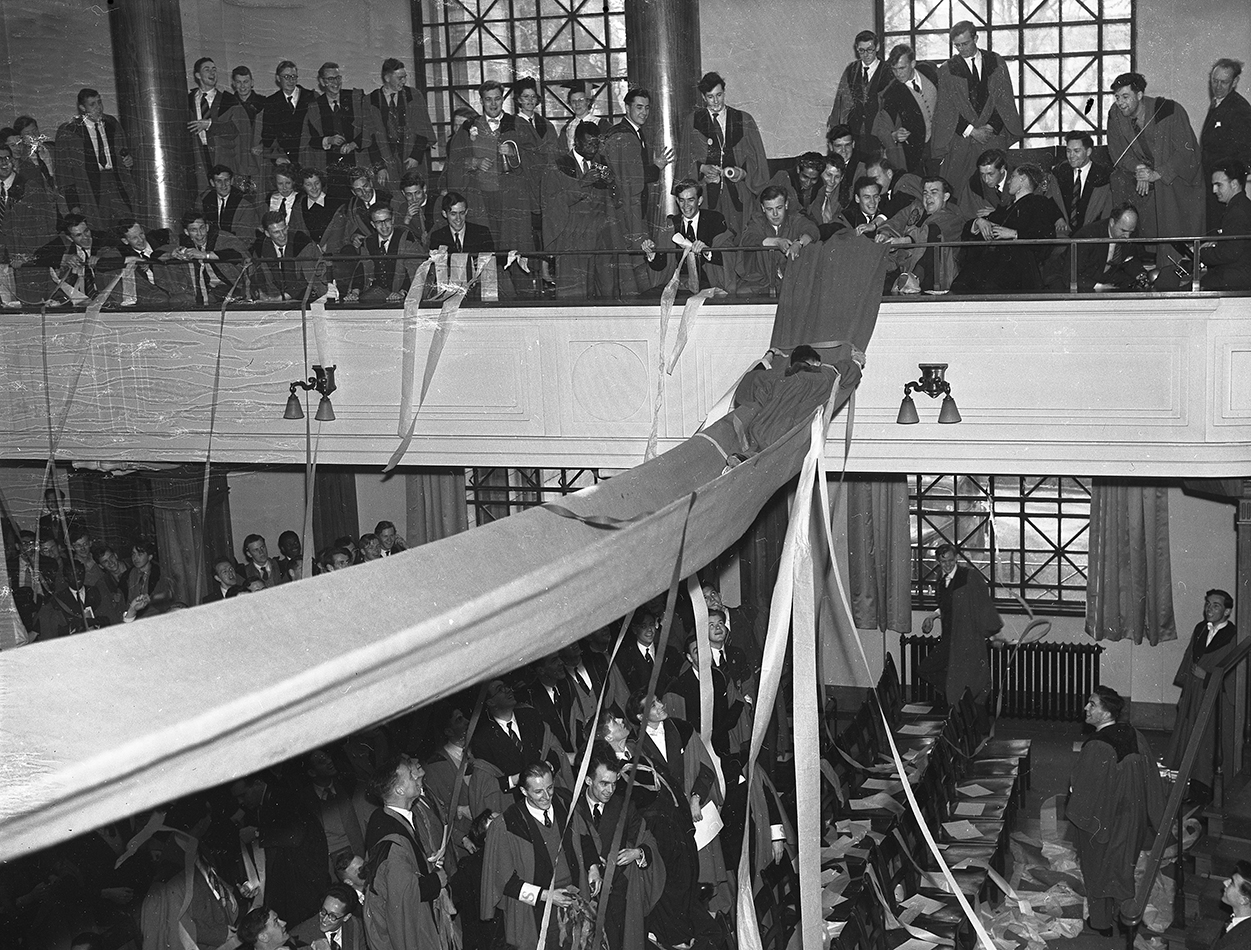
Robert, Lord Boothby (1958-61)
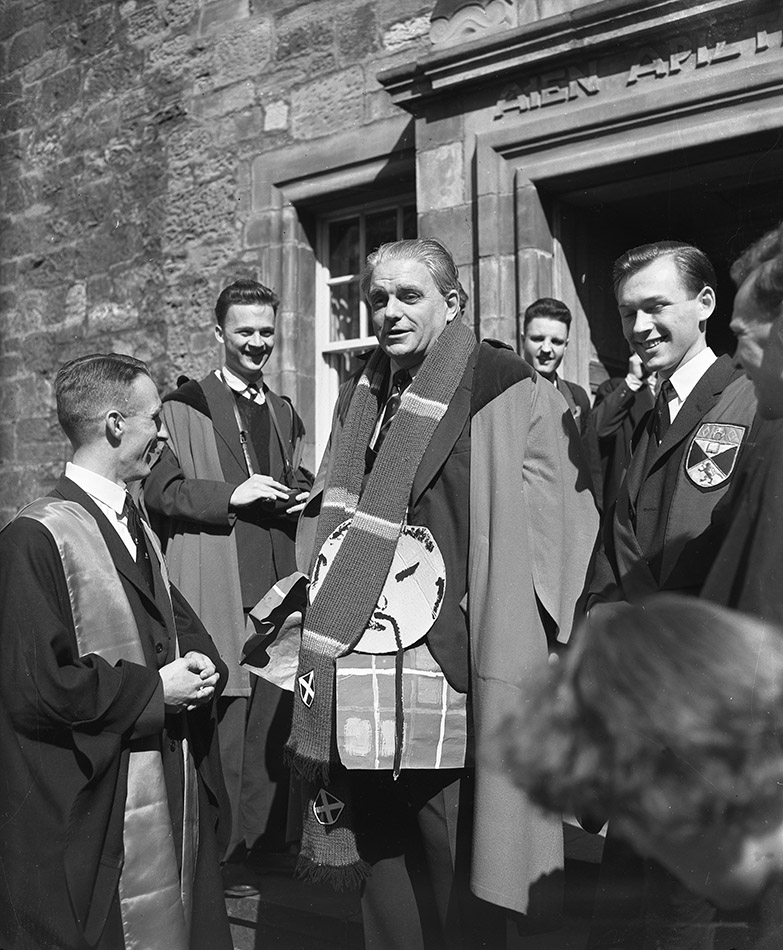
A fanfare of trumpets by three students above West Port’s arch announced his arrival. Lord Boothby received a goldfish bowl full of whisky which helped delay the drag slightly while improving the performance of its members. The gifts included a long knitted scarf, a pair of gold cufflinks, a Glengarry (bonnet), a pyjama case, a gramophone record, an outsize golf ball, a brick and the jawbone of an ass (Biblical reference – to smite the Philistines).
CP Snow (1961-64)
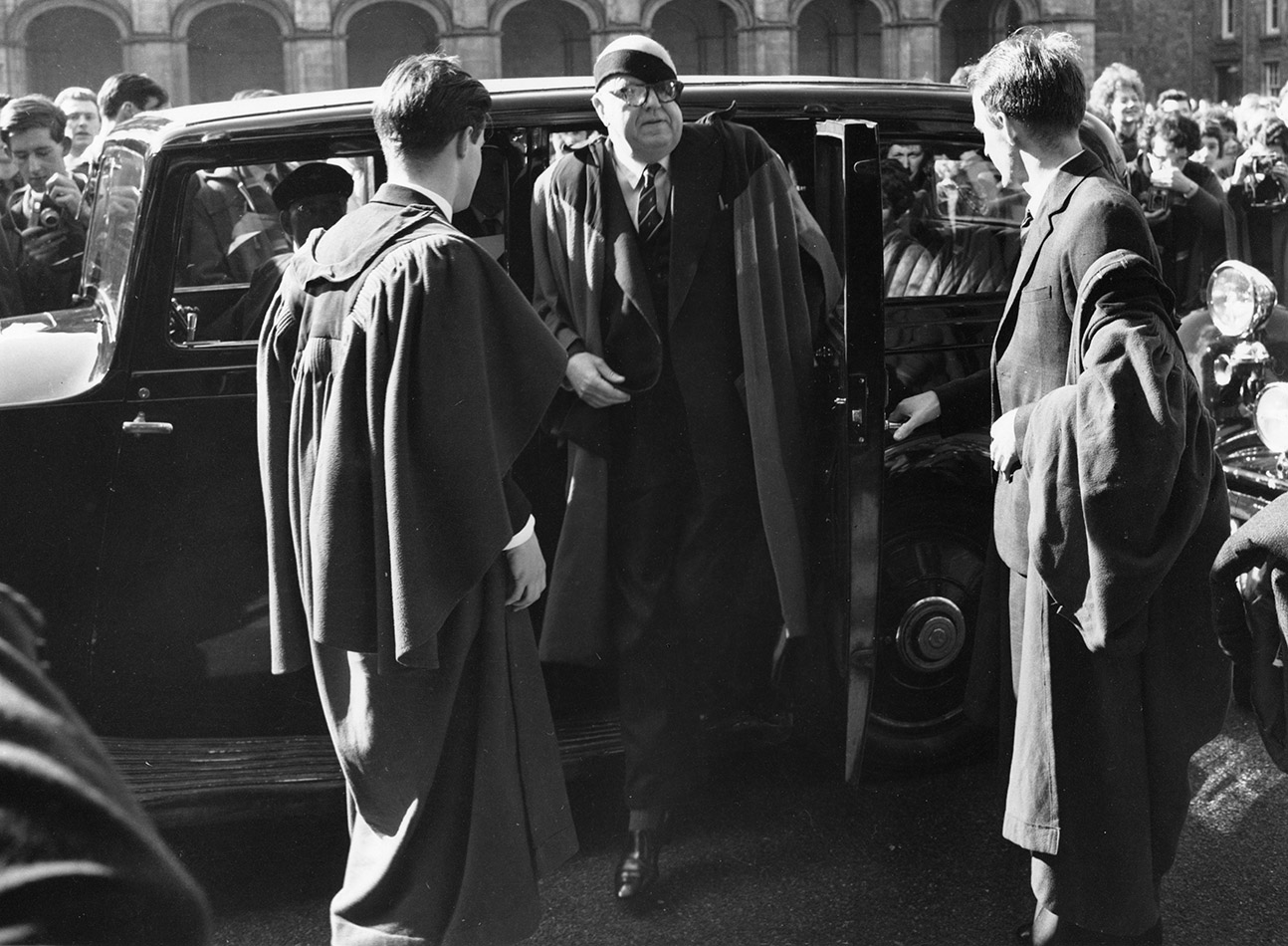
Snow’s installation celebrations were some of the quietest on record and the drag was by car since he was suffering from a detached retina and had to avoid unnecessary movement. He had a black eye patch held in place by a large dark red handkerchief throughout. At the presentation in St Andrews he received a large yogi bear from St Salvator’s Hall, a pair of braces from the Women’s Union ‘to keep up appearances’, and from the relevant faculties in Queen’s College, Dundee: a grade ‘O’ Meccano set; a silver-plated Bunsen burner; a paper knife with a molar tooth in the handle; and pills.
Sir John Rothenstein (1964-67)
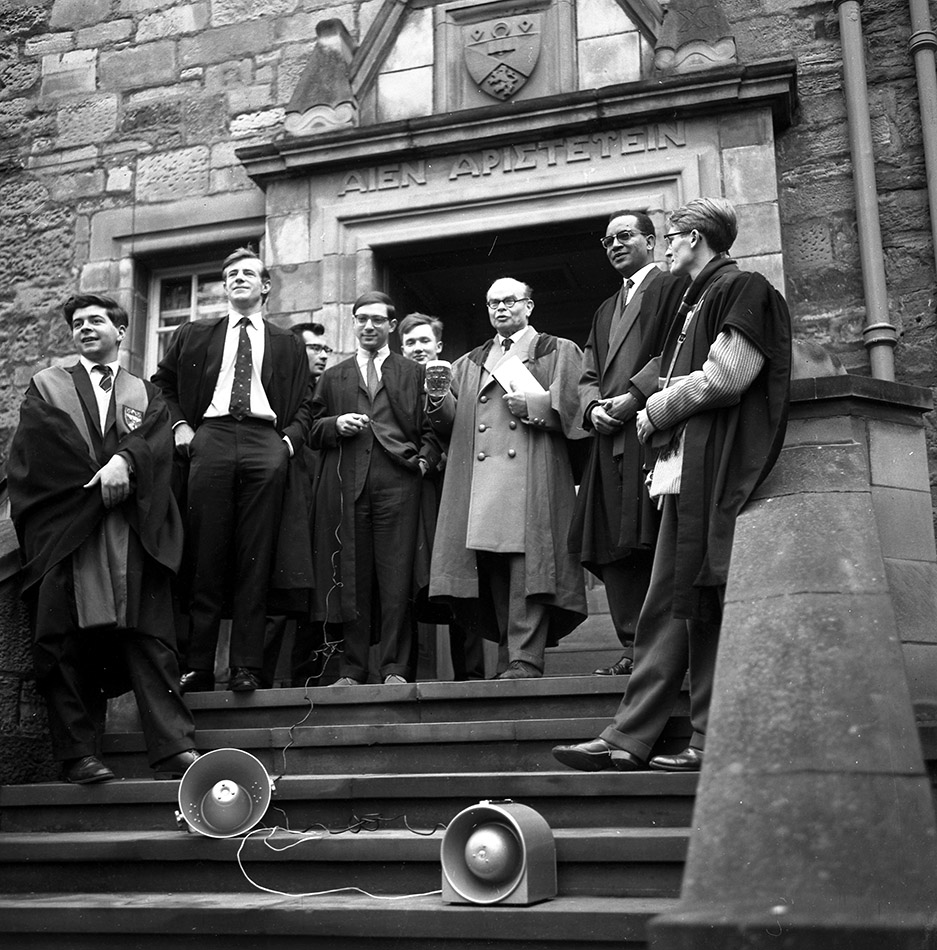
His was the first and only installation to take place in Dundee, as preparations were being made for the establishment of the new University of Dundee. The student body reached the Caird Hall in two singing serpentines: the St Andrews contingent making their way from the railway station, the Dundee one from the Dundee Students Union. Outside the Caird Hall they merged, discordantly singing different songs, into a complicated intertwining mass that eventually reached the doors of the hall. St Andrews gifts included a giant teddy bear, magic painting books, bed socks and a night cap, a shepherd’s crook to control his flock, a silver gauntlet to throw down and a shield to defend himself in conflict. From Dundee he received an elaborate cigarette-smoking machine constructed in the Engineering Department to enable him to smoke vicariously and yet avoid lung cancer.
Still to come… the politicians and pioneers give way to comedians and journalists in Rectors 1967-93, coming soon!
Rachel Hart
Senior Archivist (Keeper of Manuscripts and Muniments)
[…] This post continues our mini-series on former Rectors of the University of St Andrews. […]